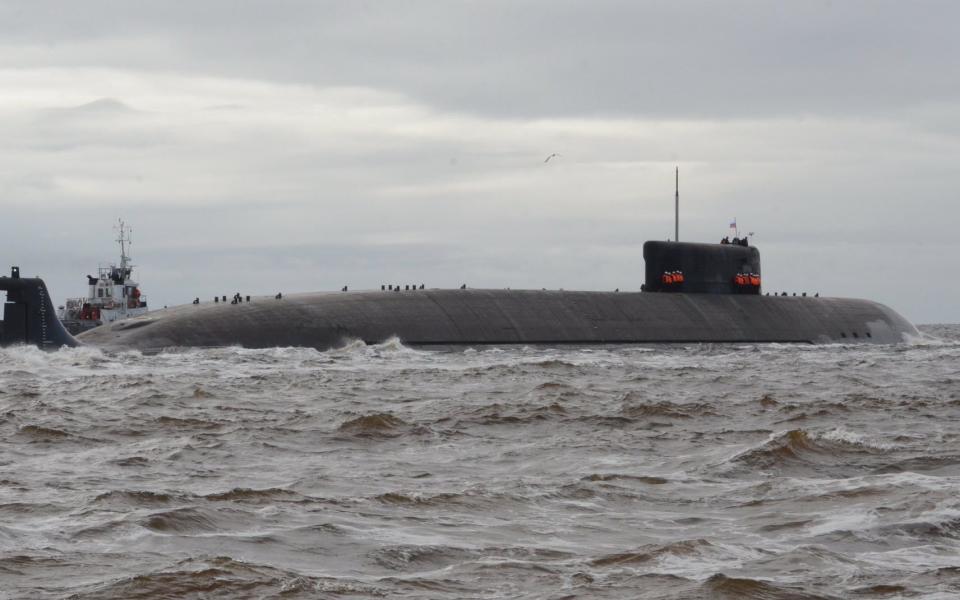Putin’s navy is now a spent force
In 2024, the Russian navy plans to take delivery of 12 new warships plus another 38 small craft, according to state media.
That’s two more warships than last year – and twice as many as the annual average for the preceding decade. And on paper, it’s two more warships than the world’s leading navy – the US Navy – plans to accept this year.
But in practice, Russia’s supposed watershed year for warship-construction is actually closer to a wash. With the exception of submarines, new Russian ships are small and lightly armed – and packed with potentially unreliable equipment such as maritime engines that Russian used to import from Ukraine, but now cobbles together on its own.
Worse, Russian shipbuilding barely keeps pace with Russian ship losses in Russia’s 28-month wider war on Ukraine. Ukrainian missiles and drone boats are sinking or blowing up Russian naval tonnage nearly as fast as Russia can build tonnage.
There are several ways to compare navies. One is to tally individual oceangoing hulls, regardless of the size of those hulls or what weapons they carry. Another is to add up how many missiles the fleet can carry, overall. A third is to count tonnage – that is, how many tons of water the whole fleet displaces.
Tonnage is a useful metric, as bigger ships tend to be more survivable and more heavily armed than potentially more numerous smaller warships. Which is why, even though the Chinese navy has more hulls than the US Navy – 350 Chinese warships to 290 American ones – the US Navy is still the more powerful navy, by far.
The US fleet displaces 8.2 million tons, while the Chinese fleet displaces 3.2 million tons. Not surprisingly, that superior tonnage also translates into heavier armament. American warships sail with around 9,900 missile cells or tubes. Chinese ships sail with just 4,200 cells or tubes – and Russian ships with just 3,000 or so.
Equally damning for Moscow, the US and Chinese navies are steadily growing in tonnage terms as bigger new ships replace smaller old ones. But the Russian navy is going in the opposite direction. Smaller new ships are replacing bigger old ones.
During the Cold War, the Russian navy was a true blue-water navy with ambitions to deploy surface ships and submarines all over the world. The surface ships included massive battlecruisers and cruisers as well as destroyers, frigates and even aircraft carriers.
But the Soviet surface shipbuilding industry collapsed when the Soviet Union did – and never really recovered. The biggest ships in Russian service – a handful of battlecruisers, cruisers and destroyers and a single decrepit aircraft carrier – are Soviet leftovers. And one of these holdovers, the cruiser Moskva, was hit and sunk by Ukrainian anti-ship missiles in 2022.

Russian industry still manages to build large numbers of big submarines. But new Russian surface ships tend to be patrol vessels, corvettes and frigates that displace just a few thousand tons – making them at most a third the size of one of the US Navy’s 70 or so Arleigh Burke-class destroyers.
Moscow’s naval ambitions have shrunk alongside its ships. More and more, the Russian navy is a coastal navy.
The main reason for the steady shrinkage of individual Russian ships, and Russian naval strategy, is that Russian industry struggles to build maritime engines of sufficient size and reliability to propel anything bigger than a frigate. Prior to 2022, Russia imported most of its maritime engines from Ukraine.
Russian warships are so unreliable that the Russian fleet takes pains to maintain a huge fleet of oceangoing tugboats whose roles include taking under tow warships whose engines fail during deployments. The Russian navy’s tug fleet displaces around 150,000 tons overall, making it bigger than the entire Canadian navy.
So yes, the Russian navy should take delivery of a dozen new warships this year. Four are subs, but most of the rest are corvettes. Considering that the Ukrainians have, so far this year, destroyed at least three surface ships belonging to the Russian Black Sea Fleet – two corvettes and a landing ship – it’s possible the Russian navy’s tonnage growth this year will be marginal if not actually flat.
Incredibly, this should represent a major improvement over 2022, a year when the Russian navy actually shrank – owing mostly to the loss of the 11,000-ton Moskva.
The long decline of the Russian navy continues, with the exception of the submarine fleet.


